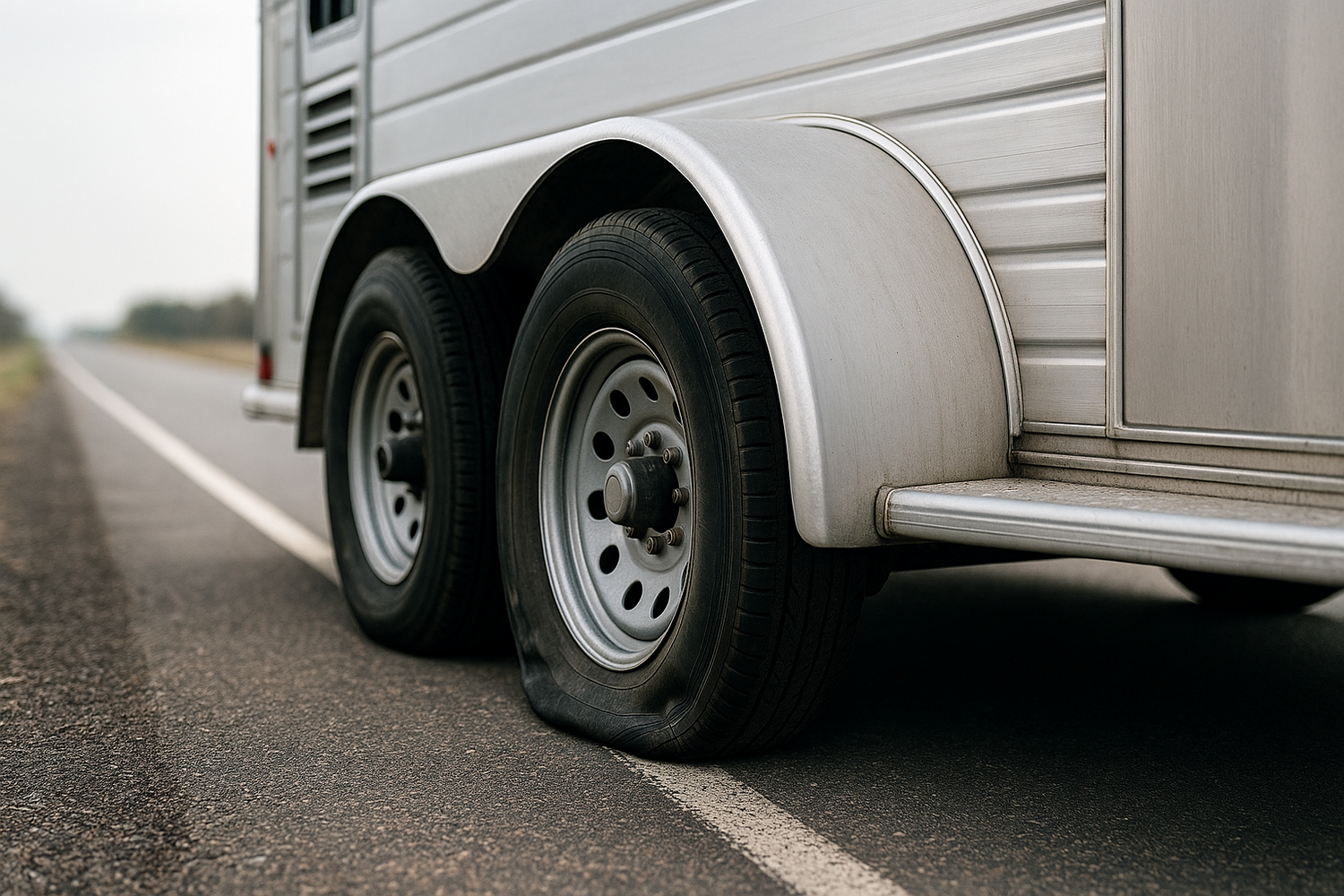In the world of trailers, the trailer tire pressure monitoring system (TPMS) plays a crucial role in maintaining safety and ensuring optimal performance. This advanced system is designed to monitor the air pressure within the tires and alert the driver in real-time if the pressure drops below a safe threshold. Understanding how these systems work is essential for anyone who relies on trailers for transport.
A typical TPMS consists of sensors mounted on each tire that continuously measure tire pressure. These sensors transmit data to a central receiver, which then displays the information on a dashboard or a dedicated monitoring device. The primary functions of a TPMS include:
- Alerting the driver: When tire pressure is detected to be low, the system triggers an alert, allowing the driver to address the issue before it leads to a blowout or other catastrophic failure.
- Improving fuel efficiency: Properly inflated tires contribute to better fuel economy. A TPMS helps ensure that tires are at optimal pressure, reducing rolling resistance and fuel consumption.
- Extending tire life: Consistently monitoring tire pressure can lead to longer tire lifespan by preventing uneven wear and damage.
Despite its benefits, users can sometimes encounter issues such as the trailer tire pressure monitor capability not detected error. This can stem from several factors including sensor malfunctions or improper installations. Therefore, ensuring that your TPMS functions correctly is vital for both safety and performance.
Tow with peace of mind, knowing that trailerwatchdog is standing guard.
Common Causes for Capability Not Detected

When encountering the trailer tire pressure monitor capability not detected issue, it is essential to identify the underlying causes to effectively troubleshoot and resolve the problem. Several factors can lead to this frustrating error, and understanding them can save time and ensure the safety of your trailer.
Here are some of the most common causes:
- Sensor Malfunction: One of the primary reasons for the capability not detected error is a failure in the tire pressure sensor. These sensors may become damaged due to wear and tear or exposure to harsh environmental conditions.
- Battery Issues: Many tire pressure sensors are powered by batteries. If the battery is low or dead, the sensor may not function correctly, resulting in a loss of communication with the monitoring system.
- Improper Installation: If the TPMS was not installed correctly, it could lead to compatibility issues or failure to recognize the sensors. This often happens when the system is retrofitted onto a trailer that was not originally equipped with a TPMS.
- Faulty Wiring: Damaged or loose wiring connections between the sensors and the monitoring system can interrupt the signal, leading to capability detection issues.
- Software Glitches: As with any electronic device, software malfunctions can occur. A reset or update of the TPMS software may be necessary to resolve the issue.
By addressing these common causes, trailer owners can improve the reliability of their TPMS and enhance their overall safety on the road.
Signs of Tire Pressure Monitor Malfunction

Recognizing the signs of a tire pressure monitor malfunction is crucial for maintaining the safety and efficiency of your trailer. Ignoring these indicators may lead to severe consequences, including tire blowouts or accidents. Here are some key signs to watch for:
- Warning Light Activation: If the tire pressure warning light on your dashboard illuminates, it is a clear indication that something is wrong. This light may vary in appearance depending on the make and model of your trailer, but it typically resembles an exclamation point inside a horseshoe shape.
- Inconsistent Readings: If your monitor displays erratic or fluctuating tire pressure readings, it could signal a malfunction. Consistency in pressure readings is vital for accurate monitoring.
- Capability Not Detected Message: As previously discussed, receiving a "capability not detected" message is a strong indicator that the system is not communicating properly with the tire sensors.
- Delayed Updates: A properly functioning tire pressure monitor should provide real-time updates. If there is a noticeable delay in pressure readings, it may point to a malfunction.
- Physical Damage: Regularly inspect your tire pressure sensors for any signs of physical damage, such as cracks or corrosion. Damage can lead to sensor failure and ultimately compromise tire safety.
Being vigilant about these signs can help you address potential issues before they escalate, ensuring your trailer remains safe and roadworthy.
Steps to Diagnose and Fix the Issue

If you're experiencing issues with your trailer tire pressure monitor, such as the "capability not detected" message, following a systematic approach to diagnose and fix the problem is essential. Here’s a step-by-step guide to help you through the process:
- Check the Power Supply: Ensure that the monitor is receiving adequate power. Start by checking the vehicle's battery connections and fuses. A blown fuse can disrupt the power supply to the monitor.
- Inspect the Sensors: Examine each tire sensor for physical damage or corrosion. Make sure they are securely attached to the valve stems. If any sensor appears damaged, replace it immediately.
- Recalibrate the System: Sometimes, the tire pressure monitor may need recalibration. Refer to your trailer's user manual for instructions on how to reset or recalibrate the system.
- Check for Interference: Ensure that there are no electronic devices nearby that could interfere with the signals being sent from the tire sensors to the monitor. Common culprits include cell phones and other wireless devices.
- Test the System: After performing the above checks, it's time to test the system. Inflate the tires to the correct pressure and observe if the monitor detects the changes accurately. If the issue persists, further investigation may be needed.
By following these steps, you can efficiently diagnose and fix the tire pressure monitor issue, helping to ensure that your trailer remains safe and reliable on the road.
Preventative Measures for Tire Pressure Monitoring
Maintaining optimal tire pressure is crucial for the safety and performance of your trailer. Implementing preventative measures for tire pressure monitoring can significantly reduce the risk of encountering issues like the "capability not detected" error. Here are some effective strategies to consider:
- Regular Inspections: Schedule routine checks of your trailer's tire pressure and monitor functionality. Inspections should be done at least once a month or before long trips. This proactive approach can help identify potential problems early.
- Invest in Quality Sensors: Utilize high-quality tire pressure sensors that are designed for durability and accuracy. Opting for reputable brands can enhance reliability and longevity.
- Maintain Proper Tire Pressure: Always ensure your tires are inflated to the manufacturer's recommended pressure. Under-inflated tires can lead to poor fuel efficiency and increased wear, while over-inflated tires can cause blowouts.
- Keep the Monitoring System Updated: Regularly check for software updates for your tire pressure monitoring system. Manufacturers often release updates that can improve performance and fix bugs.
- Educate Yourself: Familiarize yourself with the operation and maintenance of your tire pressure monitoring system. Understanding how it works can help you troubleshoot issues more effectively when they arise.
By implementing these preventative measures, you can enhance the performance and reliability of your trailer's tire pressure monitoring system, ensuring safer travels on the road.
Importance of Regular Trailer Maintenance

Regular trailer maintenance is essential for ensuring the longevity and safety of your trailer. Just as you would regularly service your vehicle, your trailer requires consistent attention to remain in optimal condition. Here are several key reasons why maintaining your trailer regularly is crucial:
- Enhanced Safety: Proper maintenance helps prevent accidents caused by equipment failure. Regularly checking components like brakes, lights, and tires ensures that everything is functioning correctly, reducing the risk of breakdowns on the road.
- Improved Performance: A well-maintained trailer operates more efficiently, which can lead to better fuel economy and smoother towing experiences. Ensuring that your tires are properly inflated and your axle temperatures are monitored can prevent issues that might affect performance.
- Cost Efficiency: Investing time in routine maintenance can save you money in the long run. Addressing small issues before they escalate into major repairs can help avoid costly fixes and extend the lifespan of your trailer.
- Increased Resale Value: A well-maintained trailer retains its value better than one that has been neglected. Keeping detailed records of maintenance can enhance your trailer's appeal to potential buyers if you decide to sell.
Incorporating a systematic approach to trailer maintenance not only ensures safety and performance but also gives you peace of mind while towing. Tow with peace of mind, knowing that trailerwatchdog is standing guard.








